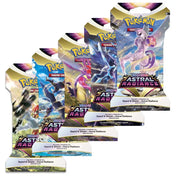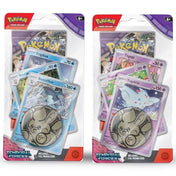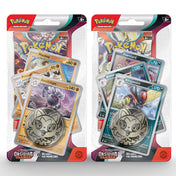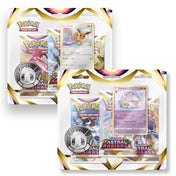Pokemon TCG card counterfeiting is unfortunately a widespread problem that affects both collectors and players. It's important to become familiar with the different methods of detecting counterfeit cards in order to protect your collection and your wallet. In this post you will learn what you should look out for to identify counterfeits and how you can protect yourself from scammers.
Identifying features of fake Pokemon cards
1. Print Quality and Color
A common identifying feature of fake Pokemon cards is poor print quality. Colors are often paler or darker than real maps, and details may appear fuzzy or fuzzy. Pay special attention to the Pokemon logo and fonts, as these are often imprecise or inconsistent.
2. Holographic effects and luster
Many fake Pokemon cards have poorly reproduced holographic effects or shine. With real cards, these effects are sharp and consistent, while with fakes, they're often fuzzy or erratic. Compare the card to a real card of the same type to see if the holography is correct.
3. Paper quality and thickness
Fake Pokemon cards are often made from inferior paper or card stock that is different from the material used in real cards. Real cards tend to be thicker and stronger than fake ones. You can check the thickness of the card by holding it between two fingers and feeling if it feels thinner or softer than a real card.
4. Cut quality and edges
Fakes often have unclean or uneven cut edges. Make sure the edges of the card are cut evenly and cleanly. Real cards tend to have sharp, smooth edges, while fakes often have jagged or jagged edges.
5. Back of card
The back of the card is another good indicator of a Pokemon card's authenticity. Compare the back of the card to a real card and look for color variations, misprints, or irregularities in the pattern.
Protect your collection from counterfeits
To protect your collection from counterfeiting, you should heed the following tips:
Buy from trusted retailers:
Always purchase cards and products from trusted retailers, official Pokemon stores, or popular online stores like Cardsrfun.com . Avoid buying cards at flea markets or from unknown sellers on online marketplaces.
Find out about the card you want to buy:
Research the card you want to purchase and familiarize yourself with its specifics and characteristics. This will help you spot fakes more easily.
Compare maps with real reference maps:
If you're unsure whether a card is real or fake, compare it to a real reference card of the same type. Pay attention to colors, fonts, holography, and other features.
Watch out for suspiciously low prices:
If the price of a card or product sounds too good to be true, it's probably fake. Be wary of offers well below market value.
Trade cards with trusted friends or collectors:
If you trade cards with others, make sure they are trustworthy and also have knowledge of real and fake cards.
Frequently Asked Questions (FAQ)
1. What should I do if I spot a fake card?
If you spot a counterfeit card in your collection, it's important to remove it and make sure it isn't confused with real cards. You can also return it to the seller if the purchase was recent and you suspect the seller knowingly sold the fake. Educate other collectors and players in your community about counterfeit cards and share your knowledge to help others avoid counterfeiting.
2. Can I use fake cards in official Pokemon tournaments?
No, fake cards are not allowed in official Pokemon tournaments. Using counterfeit cards may result in disqualification or other penalties. Make sure your tournament decks are made up of only real Pokemon cards.
3. How can I protect my cards from counterfeiting?
To protect your collection from counterfeiting, it's important to buy from trusted retailers and learn about the characteristics of real and counterfeit cards. Make sure to follow the identifiers and safeguards above to keep your collection safe and counterfeit-free.
Fakes in the Pokemon TCG can be frustrating, but with the right knowledge and precautions, you can protect your collection and ensure that you only collect and trade genuine and valuable cards. Know what to look out for and share your knowledge with other collectors and players to work together to fight counterfeiting and protect the integrity of the Pokemon TCG.
4. How can I determine the value of a Pokemon card?
A Pokemon card's value depends on various factors, such as rarity, condition, age, and demand. To estimate a card's value, you can check price guides and auction sites like eBay to see what other collectors are willing to pay for similar cards. Be sure to compare cards of similar condition and rarity for a realistic assessment.
5. Are there ways to upgrade or fix fake cards?
Counterfeit cards generally have no value to collectors, and upgrading or repairing them is not recommended as they are still considered fakes. It's best to remove them from your collection and focus on acquiring and maintaining real cards.
Conclusion
In summary, learning about the characteristics of real and fake Pokemon cards is crucial to spot fakes and protect your collection. Be careful when buying and trading cards, and use the identifications and safeguards outlined in this guide to ensure your collection remains authentic and valuable.





